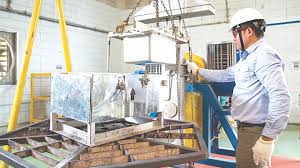The rotational molding approach begins by placing molten polymer (typically polyethylene) towards the bottom 1 / 2 of a wide open fungus cavity. Plastics rotomolding is really a approach for shaping plastic-type, normally thermoplastic, in to a wanted condition. It can be employed to produce merchandise for example piping along with other commercial items, devices like coolers and freezers, and also Rotational Molding toys like Legos!
Then it’s rotated at high speed to open up evenly all over the inside top of the shut down higher part of the mildew. Next, the mildew opens yet again, and the other sheet of fabric is put to close off one particular conclusion before it’s all sealed up once more with strain originating from each side in order that no air flow or petrol can get away anywhere during rotation.
How it operates
Rotomolding is actually a process that utilizes warmth and strain to shape plastic-type material into desired physical objects. The plastic material is heated until it will become liquid, then pressured by way of a die or fungus. This will give the plastic-type its desired condition, which happens to be then cooled and solidified.
Rotomolded goods are strong and durable, causing them to be suitable for a lot of software. Some items manufactured via rotomolding include kayaks, oxygen tanks, and car fenders.
The process starts with selecting a mold. Once the appropriate device has become determined, it needs to be prepared for injections of molten plastic-type material or metallic by removing any distinct sides and creating an adequate movement path to ensure resin can key in every area in the cavity.
A device is utilized to inject molten plastic into the ready mildew at high pressure. The molten plastic-type material quickly cools down and solidifies, undertaking the design from the cavity inside the mildew.
Air conditioning is quicker by contact with the frosty wall space of your mold and also forced air flow or water cooling down. After solidification, the aspect is ejected from the mildew, and either will go to marketplace or experiences any needed supplementary procedures like painting and construction.
The Very Last Word
The procedure is also called rotational molding, meaning the machine itself can swivel while it’s inserting molten plastic-type in to a revolving mold on its other part to generate hollow items with uniform wall surface thicknesses.



